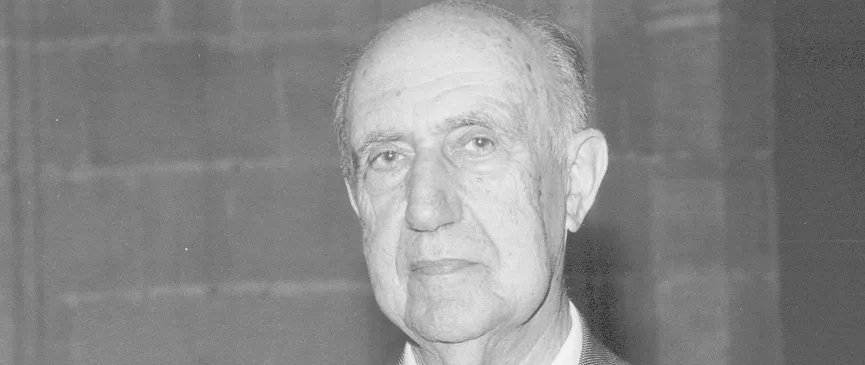Main content
Antonio Domínguez Ortiz Prince of Asturias Award for Social Sciences 1982

Antonio Domínguez Ortiz (Seville, Spain, 1909 – Granada, Spain, 2003) was a leading specialist in the history of 16th-, 17th- and 18th-century Spain, writer and time-honoured teacher. He completed his university studies in his hometown and obtained his PhD in Madrid, in his own words, “because it was mandatory [to do so] at the time”.
His future professional leanings were already evident when, under the supervision of Eloy Bullón, he wrote his doctoral thesis on The Geographical Manuscripts of the National Library. Geography was one of his first fields of research. One of the three professorships he applied for was also in geography, though, for various reasons, he was not awarded any of these chairs, being a secondary-school teacher until he retired in the early 1980s. Perhaps for this reason, it has been claimed that Domínguez Ortiz suffered a certain trauma resulting from this form of competitive examination for such posts in Spain, which, as he confessed, afflicted so many Spanish students of his generation.
Apart from some articles and minor works, his first solid book on a historical subject was Orto y ocaso de Sevilla [The Rise and Fall of Seville], published in 1947. From that point onwards, he began to focus on historical studies. Although he continued to produce some work of a mixed nature, from the 1950s onwards he turned his back on geography, finally specializing in history; in particular, in the field of modern history.
Domínguez Ortiz stood out from the start for his patient and thorough research into Spain’s historical archives, where he found socio-economic material hitherto neglected by many historians, as well as other subjects unrelated to history as it was traditionally practised, such as the issue of purity of blood and slavery in modern Spain.
He moved to Granada in 1948 to take up the post of senior secondary-school teacher, thus beginning a period during which he gathered historical material at the University of Granada Library. It was also at this time when he entered into contact with the Balmes Institute of Sociology, at the Spanish National Research Council (CSIC), headed by Carmelo Viñas. Thanks to the latter’s support, in 1952 he published his study on slavery, Los judeoconversos [The Jewish Converts] and later, in 1955, La sociedad española del siglo XVII [Seventeenth-century Spanish Society].
In the late 1950s he began to receive proposals to work as a contributing author, including a commission from the Institute of Financial Studies to conduct research on the Spanish Treasury (Hacienda). It turned out that Domínguez Ortiz had spent several summers in Simancas, working on a virtually unexplored collection of manuscripts, namely that of the Spanish Treasury’s Councils and Boards, in which, as he put it, lie the keys to all the socio-economic history of modern Spain.
Domínguez Ortiz probably shone light on Spanish society of the time of the Habsburgs like no one else, especially through works such as Crisis y decadencia en la España de los Austrias [Crisis and Decline in Habsburg Spain] and “La España de los Austrias” [Habsburg Spain], with which he captured the essence of the Spanish melting pot of those centuries, in which social conflict, religion and race acted as driving forces. For decades, he researched tirelessly, subsequently explaining all these subjects with the simplicity that made his life a continuous masterclass.
Member of the Spanish Academy of History and holder of honorary degrees from several universities, including the Complutense University in Madrid and the University of Barcelona, Domínguez Ortiz was possibly the person who has contributed the most to our knowledge of 16th-, 17th- and 18th-century Spain.
End of main content
